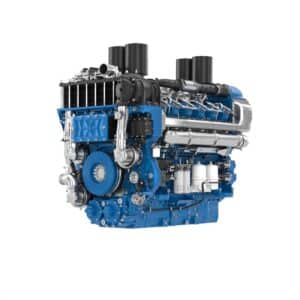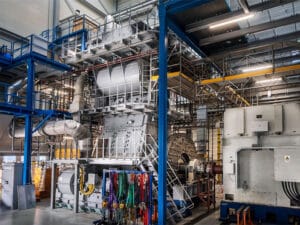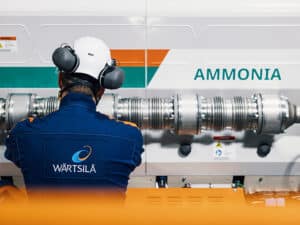
Energy density matters
Written by Marine Log Staff
Credit: Avigator Fortuner/Shutterstock
By Steve Esau, General Manager, SEA-LNG
Why does the energy density of marine fuels matter, especially when considering LNG and other future fuels? It matters because it informs new build investment decisions, shipping operations and bunker fuel procurement. John Hatley (Wärtsilä), Chair of SEA-LNG’s Investment Working Group explains why it is important that everyone in the maritime ecosystem understands this simple but sometimes confusing topic. And why getting it wrong could lead to costly mistakes.

As new fuels emerge onto the market, misunderstandings over their physical properties and how they impact ship design and fuel pricing are becoming problematic. This confusion risks distorting perspectives on the viability of low emissions fuels, which has serious implications for decision-making today and future planning for tomorrow. Understanding energy density is the key to solving this issue.
The energy density of a fuel—measured in either volumetric energy density or gravimetric energy density—is frequently overlooked due to ‘legacy’ fuel comparison methodologies. This is where like-for-like comparisons based on unit volume or weight alone do not take a fuel’s real energy value properly into account. With an influx of new fuels coming into the market, evaluating fuel performance and price by metric tons is no longer fit for purpose without the correct context. This is because the energy density of fuels will vary depending on their type and energy properties.
The energy density of a fuel can be specified in terms of energy content per unit of volume (volumetric energy density) and energy content per unit of mass (gravimetric energy density). Volumetric energy density needs to be considered when looking at a new build investment decision, as less space needed for fuel means more space available for cargo. Gravimetric energy density is critical when comparing the costs of different marine fuels—one ton of LNG bunker fuel has more energy than one ton of VLSFO, for example.
Volumetric Energy Density
Thinking long term, when hydrogen-based fuels such as green synthetic LNG and green ammonia become available from renewable energy sources, volumetric energy density will be a key factor to consider for new build investment decisions. Liquefied ammonia has approximately half the volumetric energy density of synthetic LNG, so takes up about twice the space.
In simple terms, if we look at the example of the latest CMA CGM 23,000 TEU ultra-large container vessels, designed with a 18,600 cubic metre capacity LNG storage tank, the ship would need a substantially larger, 35,340 cubic metre capacity tank if it were to run on ammonia. Putting this in simple TEU terms, green ammonia would need approximately 1,000 TEUs of space compared with roughly 500 TEUs for LNG or its green equivalents, bioLNG and e-LNG.
This is not, however, the end of the story — we also need to consider the size and cost of the storage systems for these different fuels which reflects factors like insulation and containment of cryogenic liquids, containment pressure, and safety requirements. For LNG and ammonia, the construction of the storage systems is reasonably similar. However, liquid hydrogen, which needs to be maintained at a few degrees above absolute zero, will have larger and markedly more complex tanks.
Gravimetric Energy Density
When it comes to buying marine fuels, energy density is a critical factor. Marine fuel bunkers are traditionally purchased on a dollar per metric ton basis. However, the transaction is really about buying energy to propel the ship and power any auxiliary operations. On this basis, LNG offers a lower energy cost compared with traditional marine fuels. When compared with VLSFO, for example, LNG’s energy cost per metric ton starts with a 20% advantage because it contains more energy per metric ton.
Today, energy density is considered when looking at the reported prices of different existing bunker fuels. The Platts monthly average bunker price assessments for LNG—available on the SEA-LNG website—are adjusted for energy content, providing a cost comparison with Platts assessments for marine gasoil (MGO), low sulphur fuel oil (LSFO), and heavy fuel oil (HFO).
Looking forward a couple of decades to when hydrogen-based fuels may start to become available, you will need to buy more than twice as much green ammonia than green bioLNG or e-LNG on a metric ton basis. Misunderstanding this could have significant financial implications.
Understanding the different physical properties of current and future marine fuels is critical to enabling more informed investment decisions. It profoundly affects ship design and operations, as well as low carbon fuel procurement strategies, which is why energy density matters matter.




